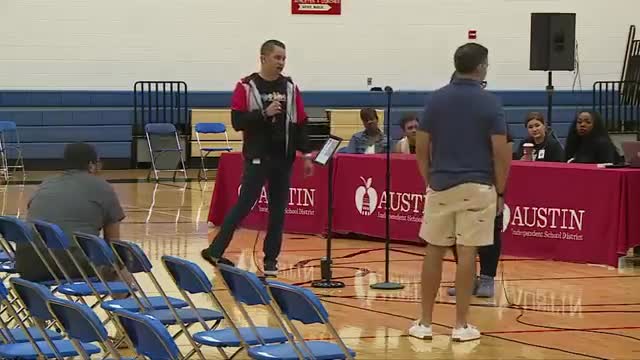Parents press Austin ISD for clearer inclusion practices, special‑education continuity and transition supports
November 09, 2025 | AUSTIN ISD, School Districts, Texas
This article was created by AI summarizing key points discussed. AI makes mistakes, so for full details and context, please refer to the video of the full meeting. Please report any errors so we can fix them. Report an error »

PARENTS AND ADVOCATES CALL FOR PERSON‑CENTERED INCLUSION
At the Q&A, parents and advocates urged the district to move beyond headline inclusion rates and adopt person‑centered, measurable practices: co‑teaching, consistent planning and PLC time, dedicated specialist access and a disability‑specific transfer mechanism when a student’s assigned campus cannot meet required services.
DISTRICT ANSWER: PROCESS, BRIDGE TEAM, AND STAFF SUPPORTS
Assistant Superintendent Dr. Cherry Lee (Special Education) and Executive Director LaShonda Lewis (Student Support Services) said special‑education students are “general education students first” and that a full continuum of services will be offered at the proposed dual‑language wall‑to‑wall elementary campuses. They described transition supports: extra planning time and functional pay for staff to prepare for merged campuses, meetings for families to meet new case managers, pre‑start visits for students and centralized placements for specialized services when needed.
INCLUSION AS AN IMPLEMENTATION PRIORITY
Superintendent Matias Segura acknowledged the district has not uniformly embedded high expectations and consistent practice across campuses and said inclusion must be built into planning, accountability and professional development. He said an academic framework to embed inclusion is planned for the spring and that he will set clearer expectations and metrics for implementation.
SUPPORTS FOR TRANSITIONS
District staff described a bridge team developing a campus transition toolkit—morning rituals, transitional activities, counseling, licensed mental‑health coverage and partner continuity—to reduce disruption for students moving between campuses. Staff emphasized that the district will try to keep familiar staff and provide transportation and after‑school program continuity where needed.
At the Q&A, parents and advocates urged the district to move beyond headline inclusion rates and adopt person‑centered, measurable practices: co‑teaching, consistent planning and PLC time, dedicated specialist access and a disability‑specific transfer mechanism when a student’s assigned campus cannot meet required services.
DISTRICT ANSWER: PROCESS, BRIDGE TEAM, AND STAFF SUPPORTS
Assistant Superintendent Dr. Cherry Lee (Special Education) and Executive Director LaShonda Lewis (Student Support Services) said special‑education students are “general education students first” and that a full continuum of services will be offered at the proposed dual‑language wall‑to‑wall elementary campuses. They described transition supports: extra planning time and functional pay for staff to prepare for merged campuses, meetings for families to meet new case managers, pre‑start visits for students and centralized placements for specialized services when needed.
INCLUSION AS AN IMPLEMENTATION PRIORITY
Superintendent Matias Segura acknowledged the district has not uniformly embedded high expectations and consistent practice across campuses and said inclusion must be built into planning, accountability and professional development. He said an academic framework to embed inclusion is planned for the spring and that he will set clearer expectations and metrics for implementation.
SUPPORTS FOR TRANSITIONS
District staff described a bridge team developing a campus transition toolkit—morning rituals, transitional activities, counseling, licensed mental‑health coverage and partner continuity—to reduce disruption for students moving between campuses. Staff emphasized that the district will try to keep familiar staff and provide transportation and after‑school program continuity where needed.
View full meeting
This article is based on a recent meeting—watch the full video and explore the complete transcript for deeper insights into the discussion.
View full meeting
